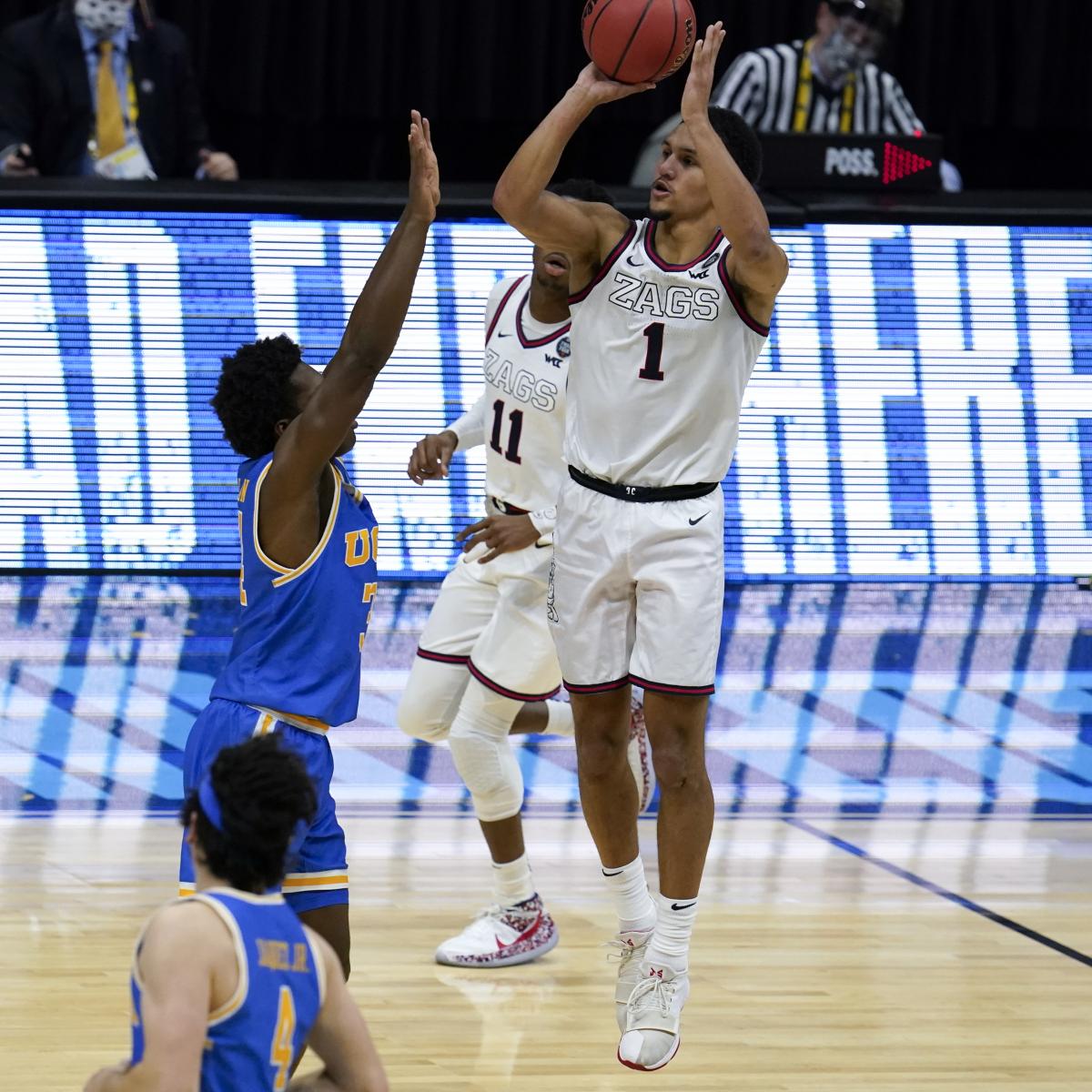
Mark Humphrey/Associated Press
20. Josh Christopher (Arizona State, SG/SF, Freshman)
19. Corey Kispert (Gonzaga, SF, Senior)
18. Tre Mann (Florida, PG/SG, Sophomore)
17. Jaden Springer (Tennessee, PG/SG, Freshman)
16. Sharife Cooper (Auburn, PG, Freshman)
15. Ziaire Williams (Stanford, SF, Freshman)
14. Kai Jones (Texas, PF/C, Sophomore)
13. Alperen Sengun (Besiktas, C, 2002)
12. Moses Moody (Arkansas, SG, Freshman)
11. Davion Mitchell (Baylor, PG/SG, Junior)
Mitchell’s breakout real
Not many 22-year-old guards who are drafted approach star status. Devonte’ Graham and Malcolm Brogdon feel like the closest in recent years, and Fred VanVleet (undrafted) is there, too. But Mitchell’s breakout feels real.
Forget the stats. The eye test sees elite-level explosion, sharp dribble moves to separate and shooting skills off the catch or dribble. He makes true point guard passing reads, and there is no question about his defensive effectiveness and its potential to translate given his strong frame, quickness and intensity.
I’m not sold that Mitchell is the next Donovan Mitchell. But it’s become too obvious that he’s an NBA player with a valuable archetype as a three-and-D guard at baseline with upside to generate offense out of isolation and ball-screen situations. Mitchell is a legitimate can’t-lose pick even if the upside never kicks in.
Ball-handler debate
Three ball-handlers packed into one tier in the teens calls for a tough debate.
Of Cooper, Mann and Springer, Cooper has the most bankable skill we can feel confident will translate: his passing. And though he only played 12 games, he was on pace to become one of four players to finish with an assist percentage over 50.0.
At the least, he’ll carve out a chance-of-pace role setting up teammates. But there are also concerns over his 6’1″ frame when it comes to finishing and defending. And nothing about his jump shot is comforting. He gets little elevation on his three-ball (22.8 percent).
Mann is the most proven shot-maker with the ball-handling skills to create his own shot. But can he channel that creation ability to set up teammates? He’s a dribbler. He needs the ball. Is he the player you want handling it for the offense? He’ll finish at Florida averaging 3.5 assists to 2.8 turnovers this season.
Springer is the most versatile. And he’s the youngest, not turning 19 until September. Unlike Cooper and Mann, however, he doesn’t have one core strength to lean on. Scouts question his creation potential without much burst or wiggle. He only received 25 ball-screen possessions, and he struggled with his pull-up and didn’t finish well.
I’m favoring Cooper by a hair for the high likelihood his playmaking carries over. He could be the most dangerous, especially in a lineup with enough shooting and defense.
Consistency equals credibility for Sengun
Still 18 years old, Sengun ranks top-three in the Turkish BSL in scoring, rebounding and shot-blocking. He’s putting up numbers every game, most recently going for 20 points on nine shots against Turk Telekom, a club that features former NBA draft picks and pros like Johnny O’Bryant, Sam Dekker, Kyle Wiltjer and Nick Johnson.
At this point, Sengun looks like the real deal given how rare it’s been for an opponent to keep him in check. From a scouting standpoint, the biggest criticism, other than the classic “lack of strength” note on a teenager’s scouting report, is his older-school style of play. He’s a post big, and it’s tough to get too excited about that type of center in today’s NBA.
But Sengun is extremely skilled and savvy operating in his office around the key. He has quick moves, footwork and touch. And he’s a timely roller who catches and finishes well after screening.
He’s just 4-of-22 from three, but there have been some flashes of shooting, and he’s hitting 80.6 percent of his free throws, so it’s not unrealistic to think his game can eventually evolve.
For a 6’10” 18-year-old, Sengun continues to strengthen his believability as an NBA prospect with his consistent effectiveness and production in a competitive pro setting.
